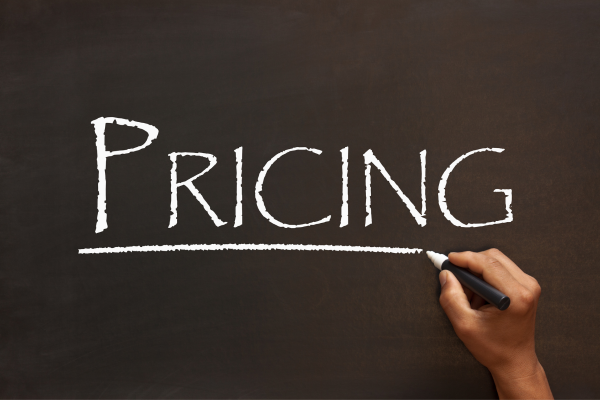
AI pricing strategies are dominating traditional methods of allocating pricing by businesses. You can say that now most retailers are in a new age of pricing – AI pricing. By leveraging AI-powered pricing, one can boost sales, profit margins, and customer satisfaction. It’s like God’s eyes that take care of your business by ensuring the optimal optimization of your product pricing.
However, setting a price for a product is not easy, especially when you are launching a new product. Retailers might wonder about the right pricing for their products to ensure optimal profit and customer satisfaction. By leveraging both traditional and present-day pricing strategies, retailers can set the right pricing for their products to meet their objectives.
An AI pricing strategy is more viable and helpful. Let’s discuss traditional pricing methods and AI pricing strategies that are prevailing in the present scenario.
Traditional Pricing Strategies
There are several pricing strategies to get an idea of the pricing allotment of a product.
1. Cost-Plus Pricing
This is one of the oldest pricing models that is still practiced by a few retailers. In this, a fixed percentage of the cost of a product is added to retain a profit. For example, If a product costs $50 to make and the company wants a 30% profit margin, the price is set at $65.
2. Competitive Pricing
This type of pricing is set in a competitive market environment when there are multiple brands of similar products. This strategy explains pricing based on what competitors are charging.
3. Value-Based Pricing
This pricing strategy is followed by top-tier retailers or those having a royal and loyal customer base. For example, Apple charges a premium price because of its brand value and user experience.
4. Penetration Pricing
Newly launched businesses or retailers are likely to approach this pricing strategy. They start with a low price to enter the market and attract customers, then raise prices later.
5. Skimming Pricing
Mainly, tech-gadgets or innovations made for tech-based consumers fall into the skimming pricing strategy, where innovators set a high price for early adopters, then gradually lower it to tap multiple market segments over time.
6. Psychological Pricing
Famously dating back to the 1890s and still widely used by various type of retailers. Prices are set to “feel” cheaper—like $9.99 instead of $10. This directly influences human psychology and buyer behavior.
7. Geographical Pricing
Different prices are based on region, local economy, or cost to distribute. It is practiced by conglomerates that have dense product variation and product mix to cater to different regions, local buyers, and international buyers.
AI Pricing Strategies
There are three major pricing strategies influenced by artificial intelligence that present-day retailers rely on.
1. Dynamic Pricing
AI algorithms tweak various datasets (related to supply, demand, and competitor pricing) to automatically adjust prices in real-time.
2. Personalized Pricing
The personalized pricing strategy follows the rule of individual customer segments, where it checks a customer’s past order history, demographics, and browse behavior, and then offers personalized pricing based on their willingness to pay.
3. Competitive Pricing
It’s a way better than traditional methods because AI analyzes competitors’ websites and product prices timely to seize the opportunity to adjust prices and maintain a competitive edge.
How AI Pricing Strategies Enhance Traditional Pricing Strategies
Well, both pricing strategies are important and are used when deciding a price of a product by retailers. But as seen these days, retailers are widely adopting artificial intelligence tools for pricing, alerts, customization, etc.
1. From Cost-Plus to Predictive Profit Optimization:
AI-powered tools examine historical sales data, seasonal trends, supply chain costs, along with other elements, to predict the most efficient percentage (or price point) in real-time.
2. From Psychological Pricing to A/B Testing at Scale:
Setting a psychological price doesn’t guarantee that the prospect will buy it. Here, AI-powered split testing helps you research and identify which price points convert best for each audience segment.
3. From Penetration Pricing to Adaptive Launch Pricing:
Another useful benefit of AI in pricing strategy is that it can simulate the adoption curve and market response to identify pricing and help adjust launch pricing dynamically.
How AI Pricing Strategy Helps an Online Retailer
Below, we briefly discuss the benefits of an AI pricing strategy for retailers like you.
- By continuously learning from real-time market conditions, it offers price drop alerts on competitors, demand curve saturation, market conditions, and much more to optimize your product pricing in real time.
- AI can use collected data for both testing and real-time application to show personalized prices or discounts, facilitating higher conversions and improved customer loyalty.
- Not only that, AI predicts what customers will want and when, using past sales, seasonality, trends, and even weather data.
- AI can adjust prices based on time of day, days of the week, holidays, or special events. It is aware of the facts and events happening globally, such as Black Friday, regional events, etc.
Key Takeaway
The most important thing for a retailer to consider while utilizing AI tools is not to overlook traditional methods, as they are still magnificent and helpful.
Combining both aspects in a pricing strategy setup gives credibility and authenticity to develop fair product pricing while adhering to the legal framework.
A summarization of the key aspects of this blog post is as follows:
- Know your business goals first and align AI to meet those goals while optimizing for pricing.
- Data is everything for an AI-based pricing strategy. Maintain data hygiene to lead to precise decision-making.
- Use the A/B testing phenomenon to get valuable information on your pricing strategy.
In conclusion, retailers can significantly increase profit margins, boost product visibility, reach wider customers, and penetrate the competitive market successfully by utilizing an AI pricing strategy.
That’s all in this blog post. Thanks for reading 🙂

Author Bio: Neeraj Gupta is a content strategist at The Next Tech. He writes to help social professionals learn and be aware of the latest in the social sphere. He received a bachelor’s degree in technology and is currently helping his brother in the family business. When he is not working, he’s travelling and exploring new cult.